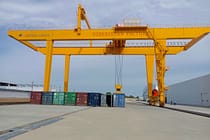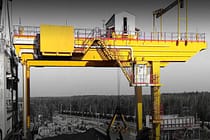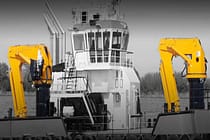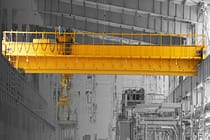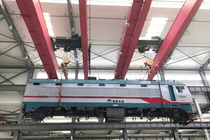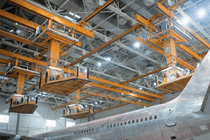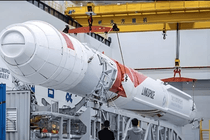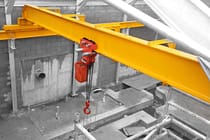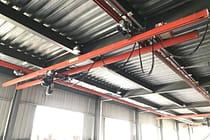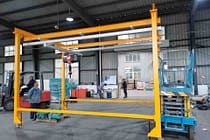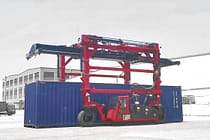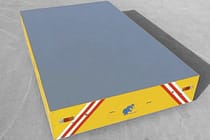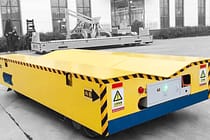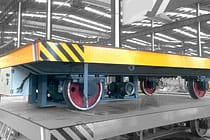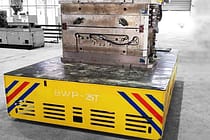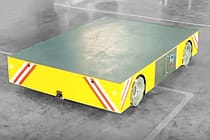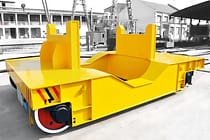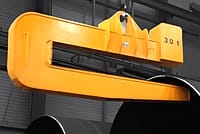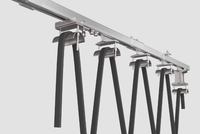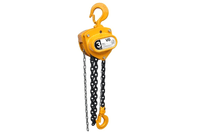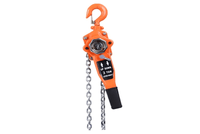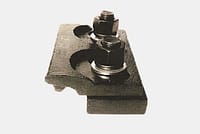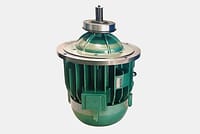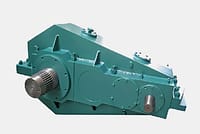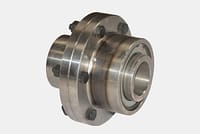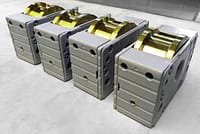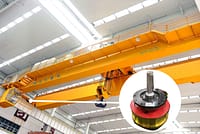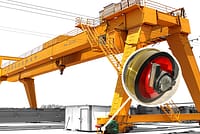How To Conduct Overhead Crane Load Testing
As a critical piece of industrial equipment, overhead cranes must be able to lift and transport heavy loads safely and efficiently. This is why it’s crucial to conduct regular load testing to ensure that the crane is in good working order and can handle the weight it’s designed to carry.
In this article, we’ll provide a comprehensive guide on how to conduct overhead crane load tests. We’ll cover everything from preparing for the test to interpreting the results and taking corrective actions, if necessary.
What Is Overhead Crane Load Testing?
Overhead crane load testing is the process of determining the maximum weight capacity of an overhead crane. The test involves loading the crane with a heavy weight to see if it can handle the load without any issues. By conducting load testing, you can ensure that your crane is operating safely and efficiently, and identify any potential problems before they become serious.
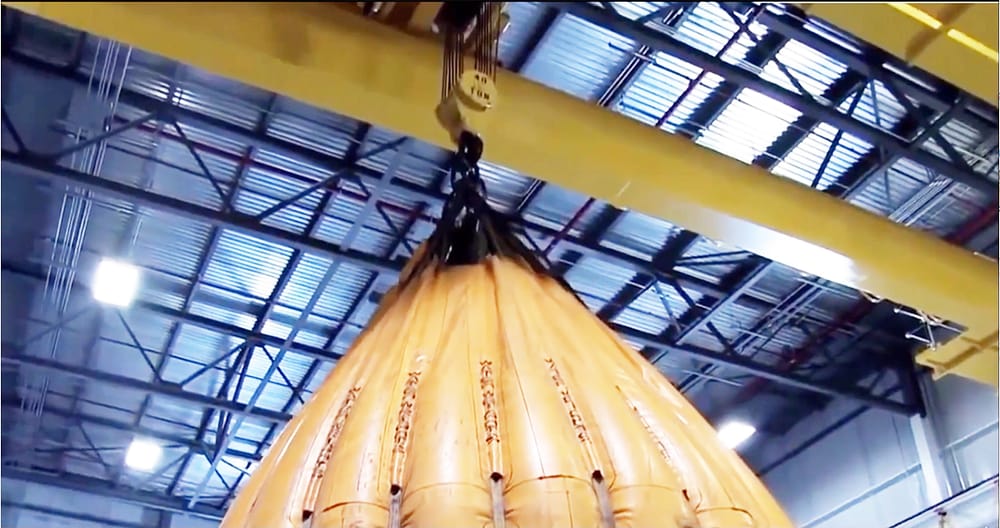
Why Is Overhead Crane Load Testing Important?
One of the primary reasons why overhead crane load testing is important is safety. Overhead cranes are often used to lift and move heavy loads, and if they fail, the consequences can be severe. A failure could lead to injury or even death, damage to the materials being moved, and significant downtime in the production process. By conducting regular load testing, crane operators can have the assurance that their equipment is safe and reliable, and that they are not putting themselves or others at risk.
Load testing also helps to identify any potential issues with the crane before they become major problems. During load testing, any defects or weaknesses in the crane’s structure or components will be identified and rectified. This proactive approach can prevent costly breakdowns or repairs and extend the lifespan of the crane.

Preparations Before Conducting The Overhead Crane Load Test
Before conducting a load test on your overhead crane, it’s essential to take certain safety measures and precautions. You should also ensure that you have the right equipment for the test and choose the right location.
Safety Measures And Precautions
First and foremost, you should ensure that all workers in the area are aware of the load test and are clear of the crane’s path. You should also use warning signs or barricades to prevent anyone from entering the testing area during the test. Additionally, the crane must be inspected and maintained regularly to ensure that all components are in good working condition.
Equipment Required For The Test
To conduct a load test, you’ll need a test weight that is at least 125% of the maximum rated capacity of the crane. You’ll also need a suitable lifting device, such as a chain hoist or hydraulic jack, to lift the test weight. Finally, you’ll need a load cell or dynamometer to measure the weight of the test load.
Choosing The Right Location For The Test
The location where you conduct the load test should be flat, level, and capable of supporting the weight of the crane and the test load. You should also ensure that there is sufficient space for the crane to move without obstruction.
Conducting The Overhead Crane Load Test
Once you’ve prepared for the load test, it’s time to perform the test itself. Here are the steps involved:
- Install the lifting device and load cell or dynamometer according to the manufacturer’s instructions.
- Attach the test weight to the lifting device.
- Lift the test weight to a height that is at least 18 inches off the ground but not higher than 36 inches.
- Hold the test load in place for at least five minutes.
- Lower the test load to the ground.
- Repeat the test two more times, for a total of three tests.
- Recording and analyzing the data collected during the test
- During the test, you should record the weight of the test load and any other relevant data, such as the crane’s movement or any unusual noises. After the test, you should analyze the data to determine if the crane passed or failed the test.
If the crane passes the load test, it means that it can lift the maximum rated capacity without any issues
Post-load Test Activities
Evaluating The Results
Load testing generates a lot of data that must be analyzed to ensure the equipment’s safety and reliability. The data collected during the test includes the weight lifted, the recorded stresses and strains on the equipment, and the time taken to reach the maximum load.
To evaluate the results accurately, it is essential to compare the data obtained during the test with the manufacturer’s specifications. If the equipment passes the load test, the data obtained should be consistent with the manufacturer’s specifications. However, if there are any discrepancies, further investigation is required to determine the cause and necessary corrective actions.
Taking Corrective Actions In Case Of Any Discrepancies
In some cases, discrepancies may occur during the load test, indicating that the equipment is not functioning as expected. If this happens, corrective action must be taken immediately to prevent further damage or accidents.
The first step is to identify the specific problem areas by analyzing the data obtained during the load test. Once the problem areas have been identified, appropriate corrective actions can be taken. These corrective actions may include repairs, part replacements, or adjustments to the equipment’s settings.
It is important to note that all corrective actions taken after a load test must be documented. This documentation should include the nature of the discrepancy, the corrective action taken, and the date on which it was completed. Proper documentation ensures that the equipment remains safe and reliable for future use.
Scheduling Future Maintenance Checks
Another critical post-load test activity is scheduling future maintenance checks. Load testing is just one aspect of ensuring equipment safety and reliability. Regular maintenance checks are also necessary to ensure that the equipment continues to function correctly.
After conducting a load test, it is important to schedule regular maintenance checks based on the manufacturer’s recommendations. These maintenance checks may include inspections, lubrication, adjustments, or any other actions that may be required to keep the equipment functioning safely and efficiently.
FAQs
- How often should bridge cranes be load tested?
Overhead cranes should be load tested annually or as recommended by the manufacturer. - What happens if an overhead crane fails the load test?
If an EOT crane fails the load test, it means that it cannot lift loads up to its rated capacity safely. The specific problem areas must be identified and corrected before retesting. - Can I conduct load testing on my own?
Load testing should only be conducted by trained professionals who understand the risks involved and can ensure accuracy and safety. - How long does load testing take?
Load testing times vary depending on the size and type of crane being tested. However, it typically takes several hours to complete the process.
Send Your Inquiry
- Email: sales@hndfcrane.com
- WhatsApp: +86 191 3738 6654
- Telegram: +86 191 3738 6654
- Tel: +86-373-581 8299
- Fax: +86-373-215 7000
- Add: Changnao Industrial District, Xinxiang City, Henan Province, China
 WeChat
WeChat








